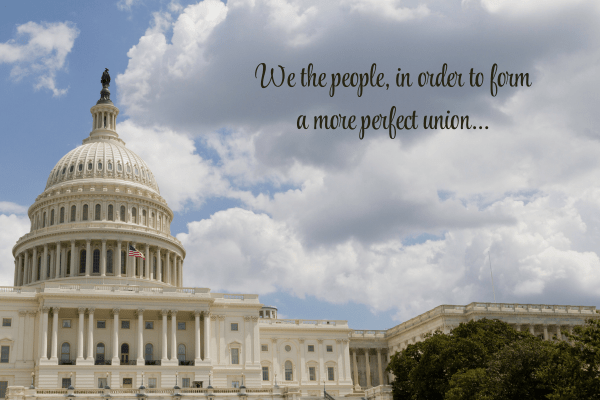When I attended church as a child, and the congregation recited the Apostle’s Creed, my mother always omitted the word “catholic.” Everyone around us said, “I believe in one holy, catholic, and apostolic church,” but Mom subbed in “Christian” for “catholic.” Her issue with the Roman Catholic Church stemmed from her childhood, when her father had a kerfuffle with the church over CCD attendance requirements and confirmation. Grandpa Willoughby ended up pulling everyone out of Catholic Church, and Mom acquired a distaste for all things Catholic. (Note the big C).
What Mom didn’t realize, or didn’t care about, was that the Apostle’s Creed uses “little c” catholic, which means “comprehensive or universal,” according to Merriam-Webster.
Along similar lines, I’m concerned that these days, as we hear talk about the United States being a “liberal democracy,” people might assume, and dare I say bristle at the notion, that the liberal in this term refers to “Big L” Liberal. As in, left leaning politics. That is not necessarily the case. Let’s be civically engaged citizens and clarify what this political term means.
According to Britannica, the idea of liberal democracy came about as a reaction to historical events of the 18th Century, including the European Enlightenment and the American and French Revolutions. Philosophers and politicians sought a form of government which upheld individual rights and allowed the people to rule themselves with limited state interference. The terms liberal and democracy existed separately before the revolutionary movements of the late 1700s.
Liberalism started with the 17th century philosopher John Locke during the Enlightenment. Locke proposed that every person had the natural right to life, liberty, and property. From Locke came the idea that government should function for the benefit of the people and according to their will.
The principles of democracy have a much older history. Records of a democratic government are found as far back as sixth century Greece. A political reformer in Athens started a new type of government called demokratia, meaning “rule of the people.” Much later, in 1215, the people of England embraced democratic ideals through the signing of the Magna Carta, a document that forced British monarchs to comply with written laws. But true democracy didn’t gain a foothold until the American Revolution.
After the United States gained independence from England, the Founding Fathers combined the principles of liberalism and democracy to form a unique government framework: a liberal democracy. This type of government incorporates several key principles.
First, plurality and tolerance are valued. This means power is dispersed among diverse groups and opposing political positions are accepted. Second, a liberal democracy uses a written constitution to resolve disagreements and maintain the rule of law. Third, such a democracy establishes a separation of powers between branches of government to prevent one branch from gaining dominance. Finally, a liberal democracy protects the civil rights of all individuals and allows the people choose (read: vote on) who will serve in government.
Now that we know a little more about what a liberal democracy should look like, we can better evaluate how well its principals show up in our current climate. If you are like me, you have concerns. But rather than becoming confused or discouraged, we must seek to understand current events in light of our country’s history This will give us a better perspective on how our government works and what we should demand as citizens of a liberal democracy. We the people must stay engaged, to protect not only our own rights and interests, but also the framework and values of this experiment in democracy that our Founders envisioned 250 years ago. I hope you will join me in that effort.
If you’d like to learn more political terms, check out my posts on:
Is there another political or historical term you’d like to share or learn more about? Tell me in the comments.
Thanks for getting nerdy with me!



